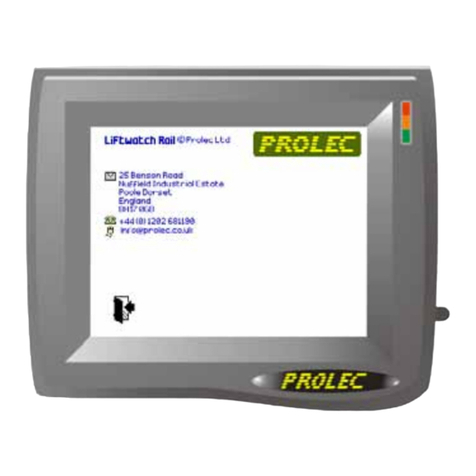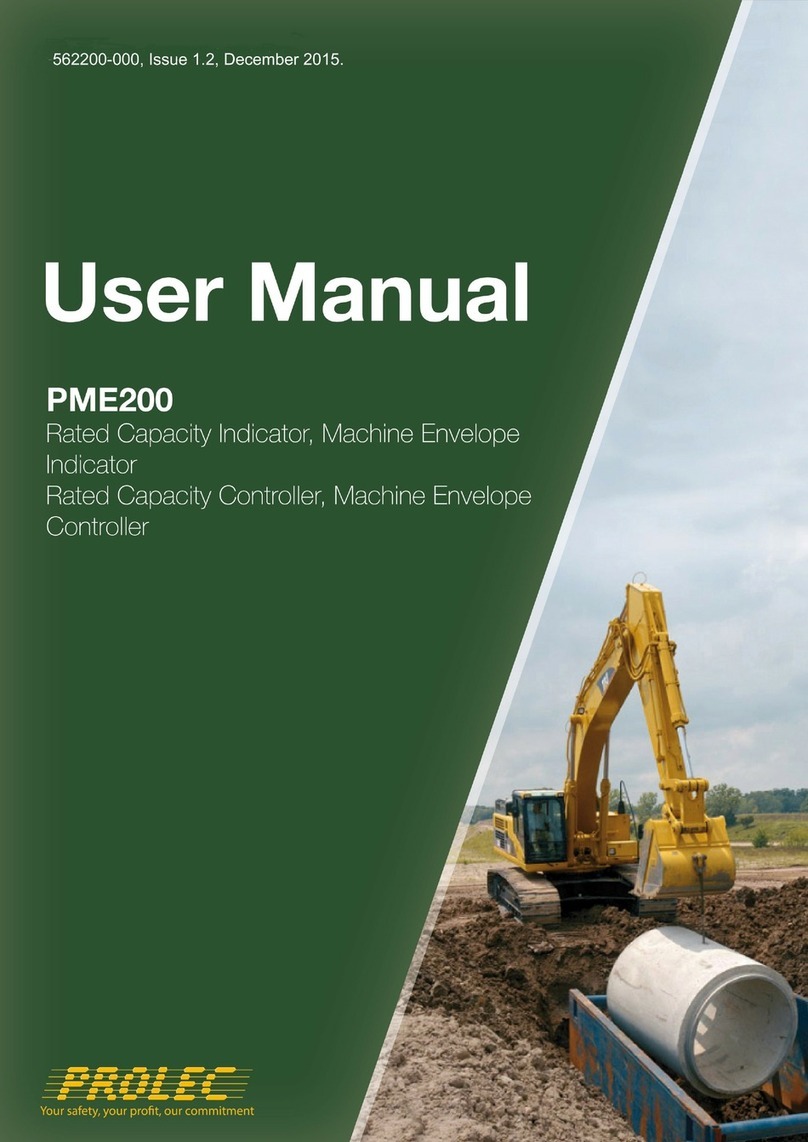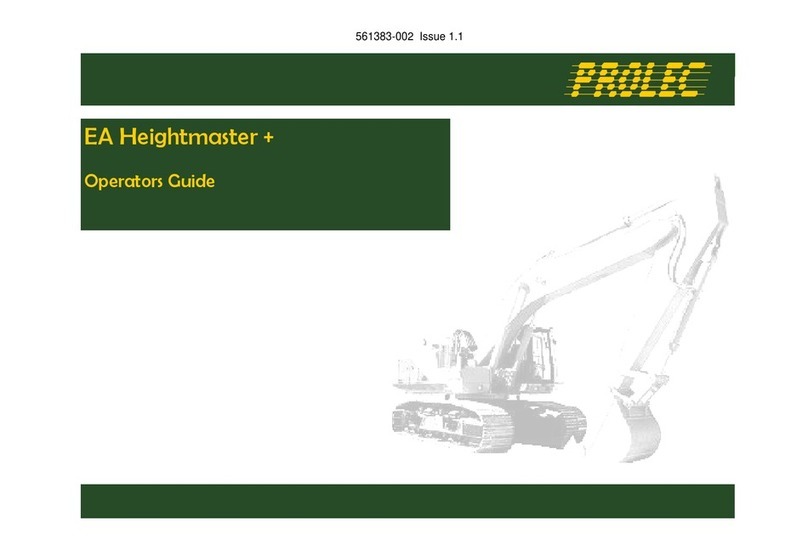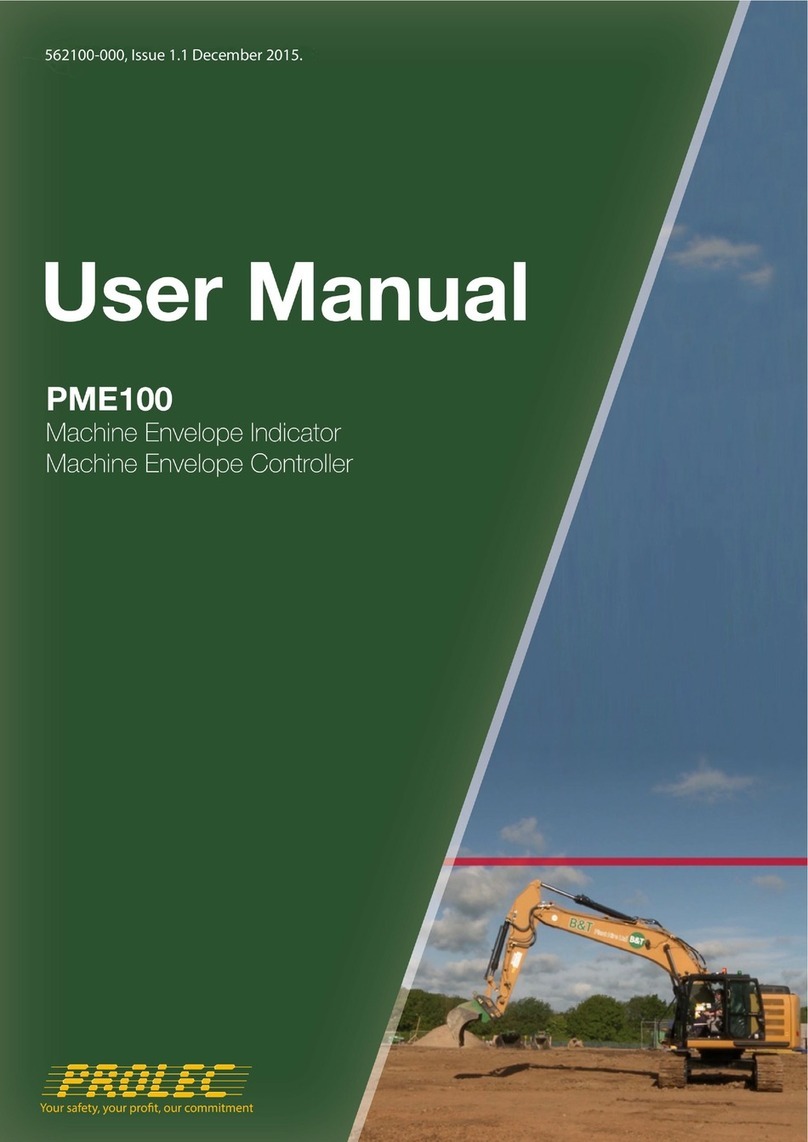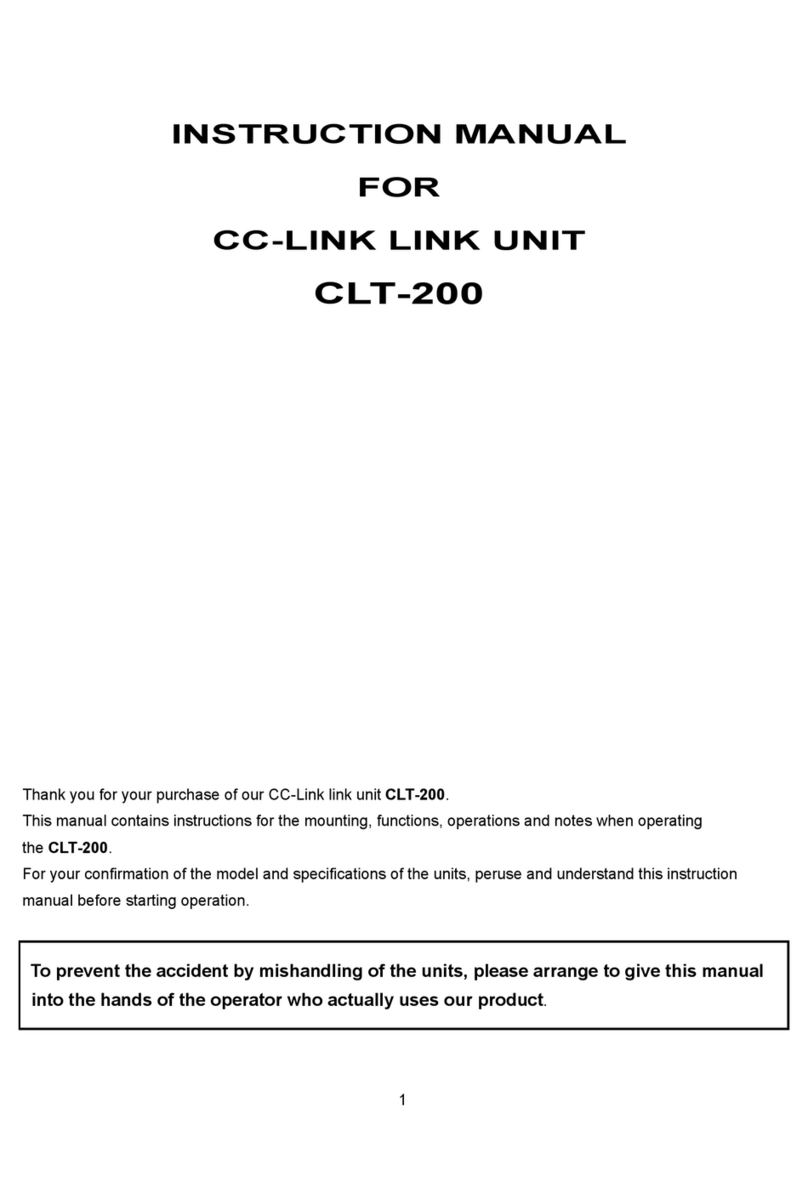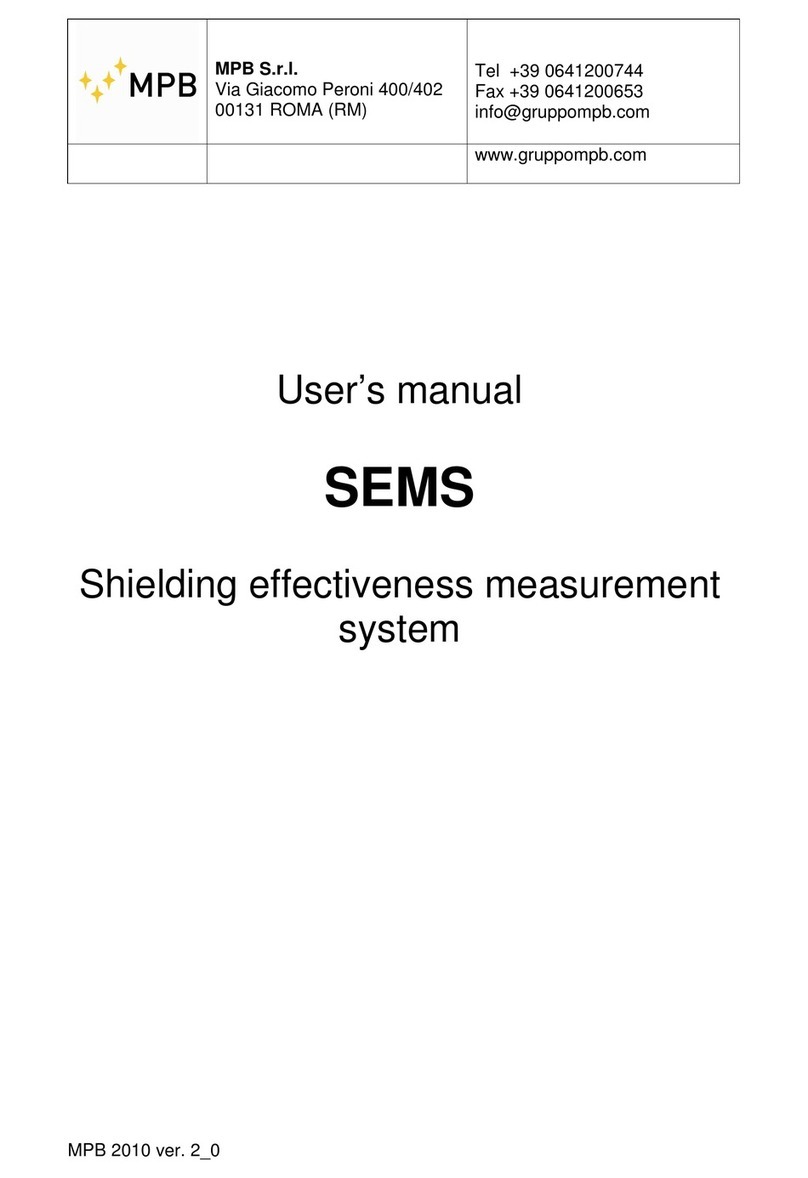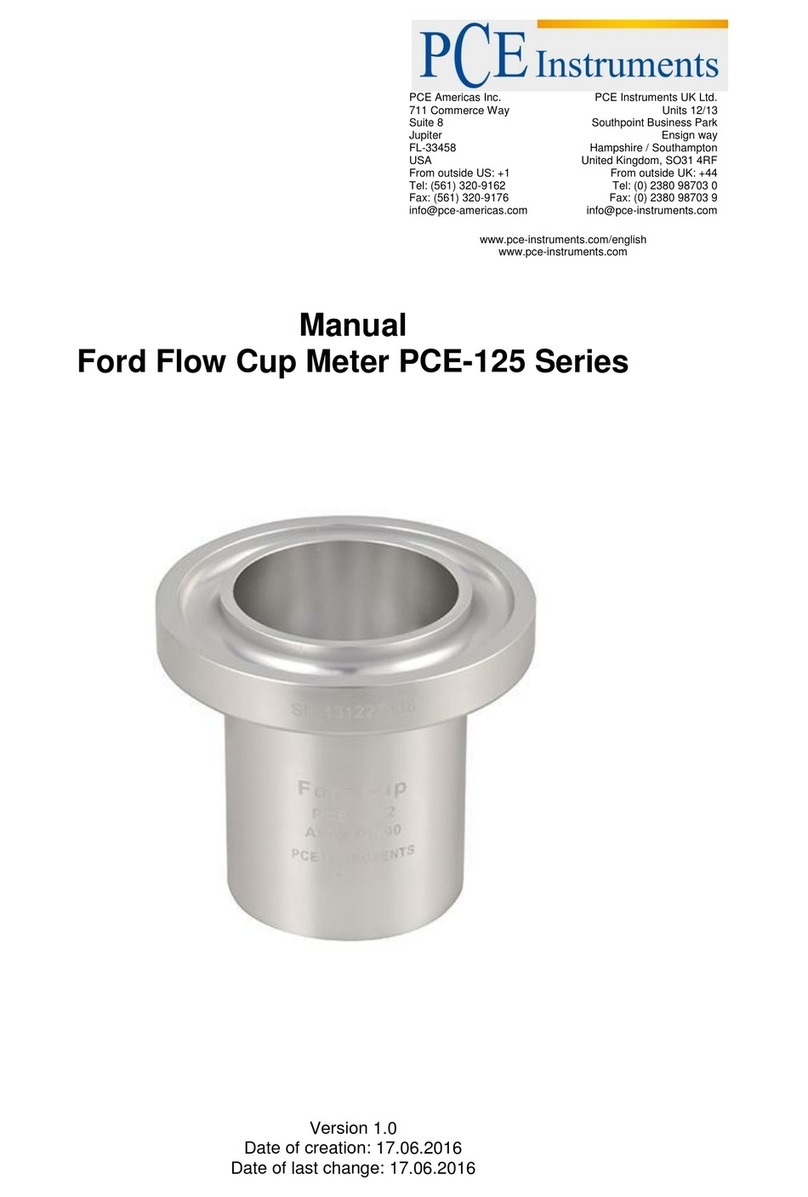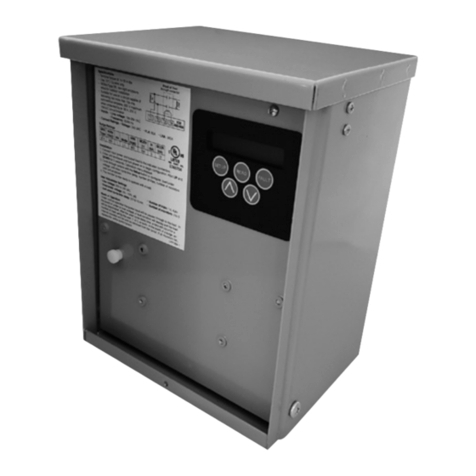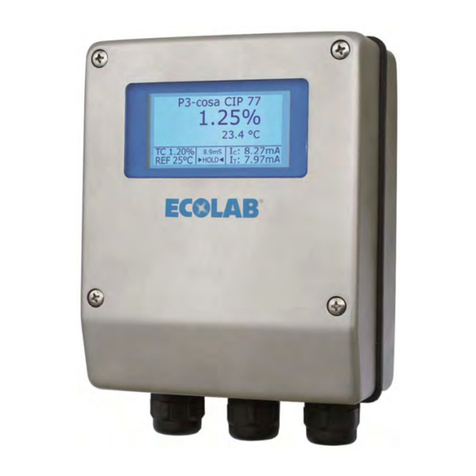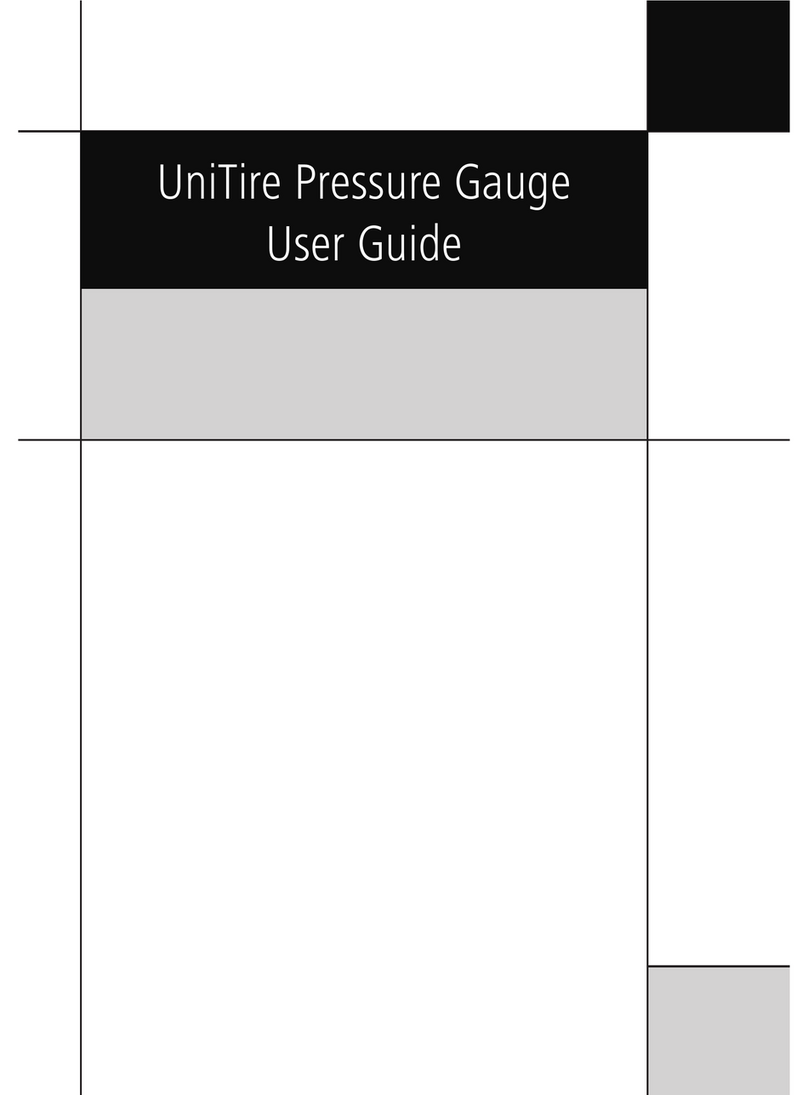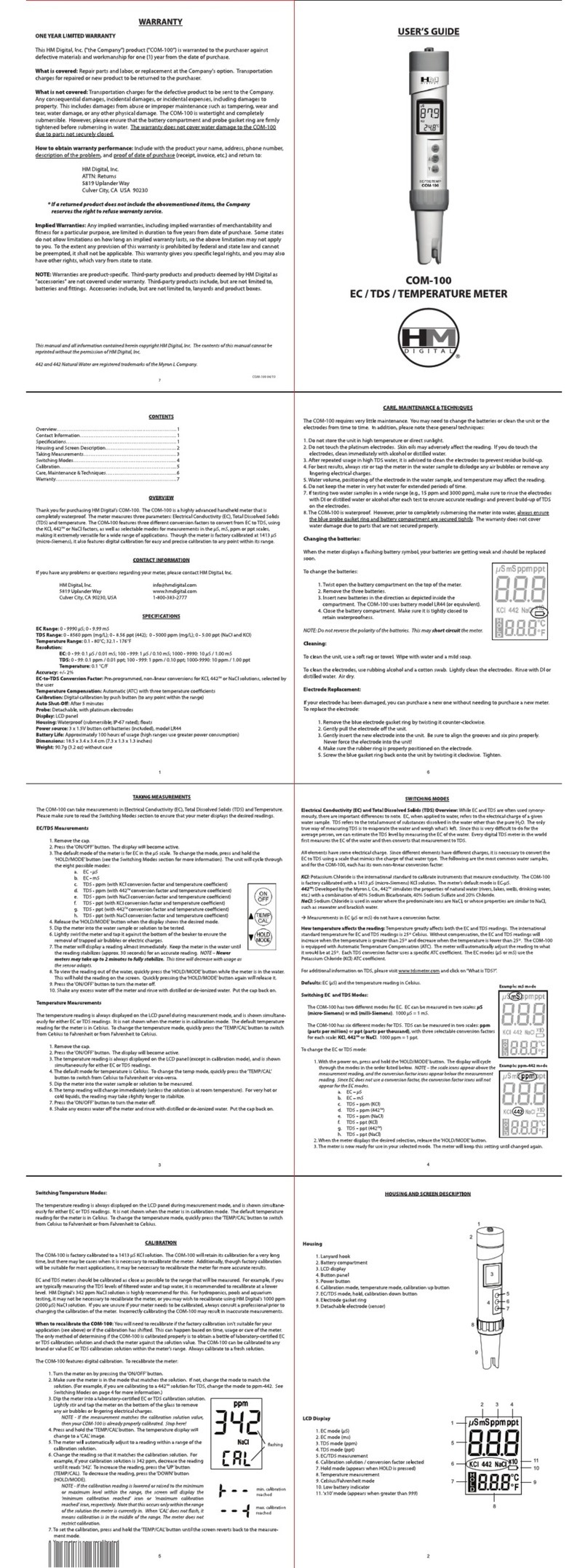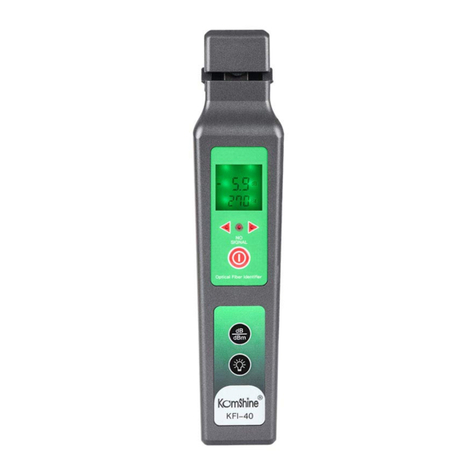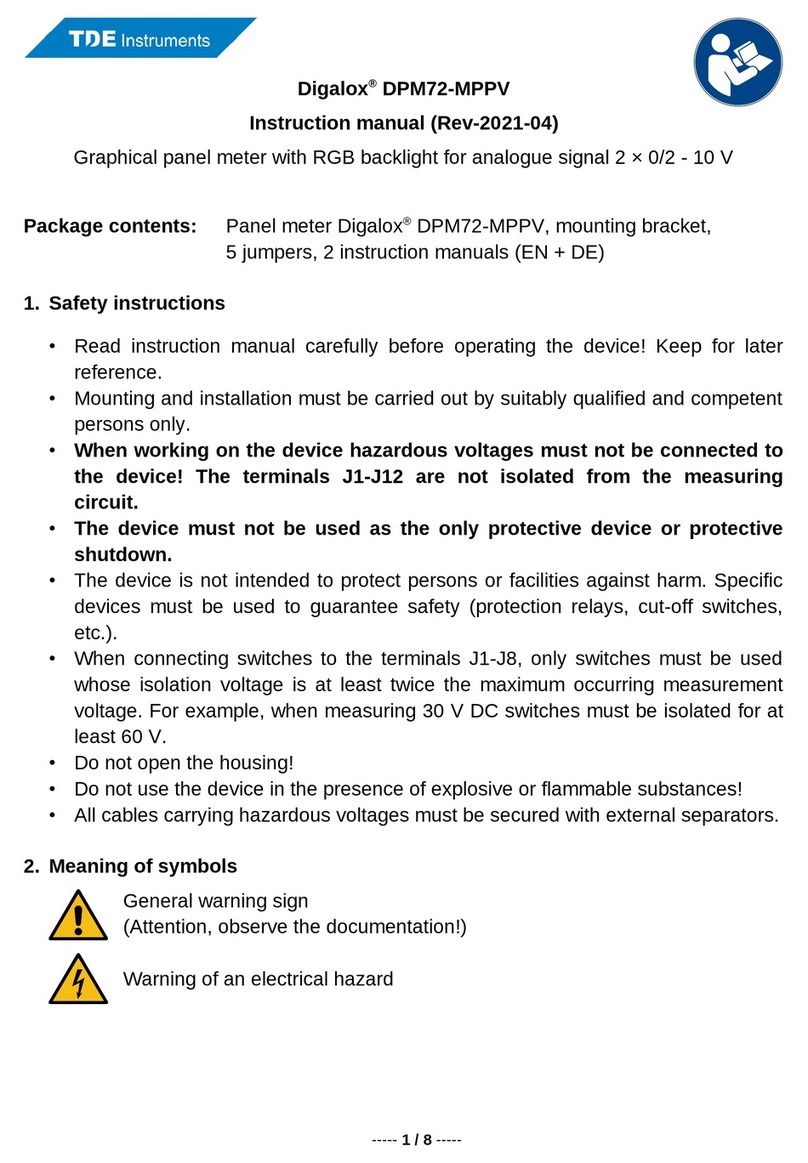PROLEC PME 500 User manual

562500-000, Issue1.0, May 2013
PME 500
Rated Capacity Indicator,
Rated Capacity Controller,
Machine Envelope Controller
Operators Manual


This guide describes operation of the
PROLEC PME LIFTING AND MACHINE ENVELOPE SAFETY SYSTEM FOR CON-
STRUCTION PLANT
Model covered : PART No. MODEL Ref
PME500 PME500 - RCI / RCC / MEC SYSTEM
Prolec supports a nationwide network of fully trained service engineers. Warranty claims,
service work, technical information and spare parts are available by contacting :
Prolec Ltd Telephone +44 (0) 1202 681190
25 Benson Road Fax +44 (0) 1202 67790
Poole Dorset BH17 0GB
DURING NORMAL OPERATION THE SAFE WORKING LOAD OF A CRANE SHOULD
NOT BE EXCEEDED. THEREFORE THE WARNING OF OVERLOAD SHOULD NOT
BE USED AS A NORMAL OPERATING FACILITY. IT SHOULD BE NOTED THAT
CERTAIN STATUTORY REQUIREMENTS DO NOT PERMIT THE SAFE WORKING
LOAD TO BE EXCEEDED EXCEPT FOR THE PURPOSE OF TESTING.
THIS RATED CAPACITY INDICATOR / CONTROLLER (RCI, RCC) IS NOT SUITABLE
FOR USE IN EXPLOSIVE ATMOSPHERES. ADJUSTMENT BY UNAUTHORISED
PERSONS WILL INVALIDATE ANY WARRANTY OR CERTIFICATION SUPPLIED. IF
A PROBLEM ARISES WHICH CANNOT BE RECTIFIED USING THIS GUIDE,
AUTHORISED SERVICE SHOULD BE SOUGHT.
THIS DEVICE IS CERTIFIED TO MEET CURRENT UK & EC SAFETY REGULATIONS
FOR LIFTING OPERATIONS.
Any alterations or modifications to machine components which affect this system and any
system component failure must be reported to Prolec Ltd or via the machine convertor/
service agreement holder. This manual must be kept with the product and be passed on
to any subsequent user of the product.
Whilst every effort has been made to ensure the accuracy of the information supplied in
this manual, Prolec Ltd cannot be held responsible for any errors or omissions.
Manufacturers original instructions.

Table of contents
1Use of this Document 8
2Notices 8
3 System Identification 9
4 Operating and Restriction Situation Recommendations 10
4.1 MEC Override 10
5Operating Instructions 11
5.1 Power Up 11
5.2 Using the Display 12
5.3 User Login 13
5.4 User Logout 14
6 Top Menu 14
6.1 Tool Selection Menu 15
7Rated Capacity Indicator / Controller 16
7.1 Introduction 16
7.2 Operation within the Safe Working Load 17
7.3 Approach to Overload 17
7.4 Stability Indication Overload 18
7.4.1 Hydraulic Limit Indication 18
7.5 Stability Control Overload 19
7.5.1 Hydraulic Limit Control 19
Continued

Table of contents (continued)
7.6 Overload / Hydraulic Limitation Control Override 20
7.6.1 Soft Override 20
7.6.2 Master Override Key Switch 20
7.7 Lift Mode Menu 21
7.8 Lifting Point Selection 21
7.9 Lifting Duties 22
7.10 Load Chart Menu 23
7.11 Safe Working Area Indication 24
7.12 Lifting Mode - Non Lifting Mode 25
7.13 Alternative Lifting Mode Screens 26
8Envelope Monitoring 27
8.1 Height Limit 28
8.1.1 Height Limits Menu 28
8.1.2 Height Limit Setting - Known Height 29
8.1.3 Height Limit Setting - Using Current Highest Point 30
8.1.4 Machine Envelope Controller (MEC) - Height 31
8.2 Max Radius Limit
8.2.1 Max Radius Limits Menu 32
8.2.2 Max Radius Limit Setting - Known Radius 33
8.1.3 Max Radius Limit Setting - Using Current Furthest Point 34
8.1.4 Machine Envelope Controller (MEC) - Max Radius 35
8.3 Min Radius Limit
8.3.1 Min Radius Limits Menu 36
Continued

Table of contents (continued)
8.3.2 Min Radius Limit Setting - Known Radius 37
8.3.3 Min Radius Limit Setting - Using Current nearest Point 38
8.3.4 Machine Envelope Controller (MEC) - Min Radius 39
8.4 Low Limit
8.4.1 Low Limits Menu 40
8.4.2 Low Limit Setting - Known Radius 41
8.4.3 Low Limit Setting - Using Current Lowest Point 42
8.4.4 Machine Envelope Controller (MEC) - Low 43
8.5 Slew Limits Menu 44
8.5.1 Angular Slew Restriction - Using current Slew Angle 45
8.5.2 Virtual Wall Restriction - using virtual wall 47
8.5.3 Twin Virtual Wall Restriction - using twin virtual wall 49
8.5.4 Multipoint Wall Restriction - using Multipoint Wall 51
8.5.5 Machine Envelope Controller (MEC) - Slew / Wall 54
9System Messages 55
9.1 On Screen Messages 55
9.2 LED and Internal Alarm Warnings 56
10 Daily checks 56
11 Repair 56

Table of contents (continued)
12 Test / Diagnostics 57
12.1 Relay Function Test 57
12.2 Slew Angle 58
12.3 Beacon, LED Alarm Function Test 58
13 System Information 59
14 Display Settings 59
14.1 Day / Night Mode 60
14.2 Select Display Machine 60
14.3 Select Safe Working Area Indication 61
14.4 Select Language 62
15 User Login 62
15.1 User Login Setup 62
15.2 Add New User to Login 63
15.3 Edit User Details 64
15.4 Select User to Delete 65
15.5 Edit User Access Code 66
15.6 Enable / Disable Users 66
16 Taking Product out of Operation 66
17 Service and Repair 66
17.1 Maintenance Review 66
18 Definitions / Glossary 67

562500-000, Issue1.0, May 2013
8 of 69
1 Use of this Document
This user guide is intended for persons familiar with the use of construction plant under-
taking lifting operations.
2 Notices
Adjustment by unauthorised persons will invalidate any warranty or certifi-
cation supplied. If an error condition is displayed which cannot be recti-
fied using this guide, halt any operation, seek authorised service immedi-
ately and do not continue operation until the fault has been remedied.
WARNING denotes information about particular risks which may be
generated by certain applications, by using certain fittings, and
about additional protective measures which are necessary for such
applications.
Caution, care, risk situation
HAZARD Actions that can lead to serious injury or death

562500-000, Issue1.0, May 2013
9 of 69
3 System Identification
The PME system provides two primary safety functions
1. Lifting Stability
2. Machine Envelope Monitoring
Both safety functions are achieved through real time monitoring some
or all of the machine’s moving parts ( booms, other articulations, turret
etc ) and its environment ( ground pitch and inclination, load etc) and
actively determining the safety of the current operation where appropri-
ate limits have been set.
The Lifting Stability function falls into two sub classes
Rated capacity indictors (RCI) warn of potential instability when
the machine is involved in lifting operations. Any motion which re-
duces the safe working load will not be inhibited at any time.
Rated capacity controllers (RCC) prevent instability when the ma-
chine is involved in lifting operations. This is achieved by hydrauli-
cally stopping unsafe movements of the machine which could
cause the machine to tip.
The Machine Envelope Monitoring function has a single class
Machine envelope controllers (MEC) prevent movements that
would bring parts of the machine into hazardous areas, most nota-
bly height restrictions when working under overhead wires.
During operation the indicators on the left are displayed on the screen
to clearly identify the function supported by your PME500. Functions
may not be available i.e. when in non-lifting mode or when envelope
monitoring is switched off, if this is the case a cross will be painted over
the relevant function icon.
Combinations of these functions may be present, it is essential that the
functions of the system installed are identified and understood.

562500-000, Issue1.0, May 2013
10 of 69
4 Operating and Hazard Situation Recommendations
4.1 MEC Override
The system can optionally be fitted with a key operated master override
switch. Turning the switch to the override position will allow normal operation
of any of the hydraulic services regardless of safety status. When the unit is
in override the external alarms will stay active, and the beacon (if fitted) will
indicate that the machine is overridden, the red LED will flash and an ‘In
Override’ message will appear on the display.
Operating Recommendations
When using envelope monitoring:
When setting a slew restriction,
make sure any implement attached
is in its least favourable position
Check for correct operation once the
restriction or restriction have been set
Reduce operating speed
Do not move the equipment quickly
when close to a restriction
Do not operate the machine in a
reckless manor
Do not travel with a restriction set
Do not travel
Reset the slew restriction if the
machine is relocated
Hazard Situation Recommendations
In a limit hazard state:
Return the control levers to neutral once
a limit has been reached if appropriate
Operate the machine at a slow speed
Do not travel
When operating the machine as a
crane:
Ensure Lift Mode is selected dur-
ing lifting operations
Operate the machine at a sensible
speed
Take extra care when travelling
with a load attached
Do not operate the machine in a
reckless manner

562500-000, Issue1.0, May 2013
11 of 69
5 Operating Instructions
5.1 Power Up
The PME system automatically powers up when the machines ignition is switched on.
The in-cab unit incorporates a 4.3” high resolution LCD display and is controlled with
three buttons at each side. Three status LEDs and an internal alarm provide further infor-
mation.
The system will perform a self check at start up:
1. All LEDs will flash, the internal display alarm and the external alarm will sound.
2. The RED LED will light indicating the system is starting and performing a self test.
3. Once the self test is complete, the GREEN LED will light and the system will be-
come active. A safety warming message is displayed, pressing any button activates
Lifting Mode. Any previous limits set will be enabled. The system is now ready for
use.
4. The system can be configured to require a user login - if this is enabled, see section
5.3.
If the RED LED remains lit, a fault has been detected, halt any operation, seek authorised
service immediately and do not continue operation until the fault has been remedied.
The display is secured to the machine using a flexible ball mounting allow-
ing easy adjustment for personal viewing preference.

562500-000, Issue1.0, May 2013
12 of 69
5.2 Using the Display
The display is operated by using the buttons adjacent to a function icon. The buttons can
open a sub menu, turn a function ON or OFF, set a value, toggle through multiple
screens, no one button has a single function. The button icon will turn black/purple when
the button has been activated. Note that the image of the machine is fixed and does not
follow the movement of the machine.
A secondary symbol can appear in the top left corner of an icon, these mean :
The plus symbol indicates a sub menu will be opened if selected.
The cycle symbol indicates that multiple features are available.
The on/off symbols indicate if a feature is ON or OFF. Red is ON and grey is OFF.
Help is available for each button. To access the
help, push and hold the button for three seconds.
The help screen can be cleared by pressing any of
the six buttons. PME is still active when displaying
help messages, if the Lifting Mode is active and or a
height limit is set any alarm or warning condition will
be indicated.
Multifunction buttons:
The action of the button is
indicated by the adjacent
icon.

562500-000, Issue1.0, May 2013
13 of 69
5.3 User Login
If PME has been configured to work with the built-in user list, the system will prompt for a
user login pass code. Select the user name required and the login code screen will ap-
pear.
Using the arrow buttons to enter a valid pass code. The previous pass code digits will be
replaced with a star as the code is entered. Press the TICK button to confirm the login
pass code. If a valid pass code is entered the system will commence normal operation.
If an incorrect login code is entered, a failure screen will be
displayed. Press the TICK button to return to the Select
User screen.
Accept highlighted duty
Cancel without change
Accept displayed
value
Cancel without
change Moves highlighter UP
Moves highlighter DOWN
Moves highlighter UP
Moves highlighter DOWN
Select highlighted name
to open Enter Login
Code screen below
About Login

562500-000, Issue1.0, May 2013
14 of 69
Switches Lifting
mode ON and OFF
Tool selection
5.4 User Logout
If a user is logged in as the current user, they can select the logout screen by holding an
exit key down for three seconds.
Once logout has been confirmed the login screen will be automatically displayed.
Press the CROSS button to stay logged in, the screen will return to that previously
shown.
6 Top Menu
The Top Menu screen allows access to all the system functions. To reveal the icons, if
hidden, press any button. To return to the Top Menu from a sub menu press the EXIT
button until the Top Menu is displayed.
Top Menu button functions:
Limits menu
Lifting menu
Tool selection
Test / Diagnostics
Lifting Mode ON and OFF
Hide icons
To hide the icons when at the Top Menu, press the EXIT
button once more.
Confirm logout
Cancel to stay
logged in
Menu level indicator
Limits Menu Test Diagnostics
Hide icons
Lifting Menu

562500-000, Issue1.0, May 2013
15 of 69
6.1 Tool Selection Menu
The system can monitor the position of a tool and so be calibrated with, one or
multiple tools. If more than one tool has been calibrated, it will be manually
selected via the Select tool selection screen shown below. Use the arrow but-
tons to select the required tool and confirm using the TICK button. Example
tools are shown in the listing.
Different tools allow for monitoring of the tool point and the tool width only, other extremi-
ties are not taken into account.
When setting any limit the tool fitted should be set to its least favourable position.
If no tool or tools have been calibrated this screen will not be accessible and any imple-
ment attached will not be monitored.
Moves highlighter UP
Exit without change
Moves highlighter DOWN
Accept highlighted Tool

562500-000, Issue1.0, May 2013
16 of 69
7 Rated Capacity Indicator / Controller
7.1 Introduction
The PME500 RCI/RCC has been designed to meet European requirements for the provi-
sion of rated capacity indicators. PME500 ensures that the maximum lifting capacity over
the range of a machine working envelope can be utilised. The system will always start up
in Lifting Mode. See section 4 for operating advice when using construction plant as a
crane. The Lifting Mode feature can be used in conjunction with envelope monitoring,
see section 8. In this mode, the beacon (if fitted) will indicate that the Lifting Mode func-
tionality is active.
1. Lift point radius is the horizontal distance in metres from the slew centre line to the
lifting point.
2. Current lifting duty in use.
3. Current lift point in use.
4. Safe Directional indicators. The triangles on both sides of each piece of equipment
and slew arrows indicate if it is safe GREEN, or unsafe RED to move the relevant
articulation and direction in that direction under overload condition occurs. Triangles
also indicate safe direction of movement when in breach of a height limit. A value
red border indicates that the articulation is limited by hydraulic capacity and not by
machine stability.
5. RCI / RCC - MEC indicators (see section 3)
6. Maximum Safe Working Load (SWL) for the current lifting point height and radius
combination. The value is given in metric tonnes.
7. SWL percentage bar graph indicating the percentage of the current load to the
maximum available safe working load.
8. Load on Hook (LOH) shows the current load in tonnes suspended from the lifting
point.
The SWL as displayed assumes that the load is suspended directly below the
lifting point. The weight of the tool or tools, if fitted, (e.g. Bucket , quick hitch etc)
are included in the SWL and LOH values if they were taken into consideration when
the system was calibrated. The bucket cylinder and control linkage is assumed to
be present.
2. Current Duty
8. Load On Hook 6. Maximum Safe Working Load
5. MEI / MEC indicators
7. SWL percentage
5. RCI / RCC indicators
1. Lifting point radius 4. Safe directional indicators
4. Safe directional indicators
3. Current Lifting point

562500-000, Issue1.0, May 2013
17 of 69
7.2 Operation within the Safe Working Load
With the Lifting Mode active, the current lifting point radius and the
maximum safe working load for that radius are shown.
7.3 Approach to Overload
With the Lifting Mode active, if the load is greater than 95% of the maxi-
mum safe working load the system will warn the machine is approach-
ing the lifting capacity at the current height and radius.
In the event of an approach to overload or an overload condition, the lifting
point should only be moved in a direction that increases the safe working
load. See section 4 for further information.
If the load is greater than 95% of the
maximum safe working load.
The load capacity indicator will be
amber
The amber LED will be lit
The internal alarm will sound
The message shown here will be
displayed.
If the load is less than 95% of the
maximum safe working load
The load capacity indicator will be
green
The green LED will be lit

562500-000, Issue1.0, May 2013
18 of 69
7.4 Stability Indication Overload
The system indicates an overload condition via internal and external alarms only
- no motion is cut.
7.4.1 Hydraulic Limit Indication
If a particular lift is limited by hydraulic capacity rather than stability, the directional indica-
tor on the articulation in question will have a RED border. Hydraulic limitation is more
likely to occur at short radii.
If the load is greater than 105% of the
maximum safe working load
The load capacity indicator will be red
The red LED will flash
The internal and external alarm will
sound
The message shown here will be
displayed
Unsafe motion is indicated by RED
arrows, safe motion is indicated by
GREEN arrows
In the event of an approach to overload or an overload condition, the lifting
point should only be moved in a direction that increases the safe working
load. See section 4 for further information.

562500-000, Issue1.0, May 2013
19 of 69
7.5 Stability Control Overload
Where an overload condition occurs the machine hydraulics will be locked to pre-
vent any further dangerous movements. Only those movements that allow safer
operation remain active. The radius cannot be increased and the load cannot be
raised. The internal and external alarms will sound in conjunction with visual indicators on
the display.
7.5.1 Hydraulic Limitation Control
The system will cut motion to the appropriate articulation in a hydraulic limit state via
internal and external alarms in conjunction with visual indicators on the display.
*Where an overload condition occurs the machine
hydraulics will be locked to prevent any further
dangerous movements. Only those movements
that allow safer operation remain active. The ra-
dius cannot be increased and the load cannot be
raised.
After three seconds a soft override will become available, see section 7.6.1
If the load is greater than 105% of the
maximum safe working load
The load capacity indicator will be red
The red LED will flash
The internal and external alarm will
sound
The message shown here will be
displayed
Motion control of the machine will
operate, motion cut is indicated by
RED arrows, safe motion is indicated
by GREEN arrows
In the event of an approach to overload or an overload condition, the lifting
point should only be moved in a direction that increases the safe working
load. See section 4 for further information.

562500-000, Issue1.0, May 2013
20 of 69
7.6 Overload / Hydraulic Limitation Control Override
7.6.1 Soft Override
After three seconds a soft override button will replace the Lifting Mode button.
If soft override is utilised, the machine hydraulics will be re-enabled. However,
the external alarm will stay active, the red LED will flash, and the beacon (if
fitted) will switch off. Once the alarm condition has been corrected the RCC
will automatically clear the override request and revert to normal operation.
7.6.2 Master Override key Switch
The system can optionally be fitted with a key operated
Master override switch. Turning the switch to the override
position will allow normal operation of any of the hydraulic
services regardless of safety status. When the unit is in
override the external alarms will stay active, and the beacon (if fitted) will indi-
cate that the machine is overridden, the red LED will flash and an In Override
message will appear on the display. See section 4.1 for further details.
Soft override
Table of contents
Other PROLEC Measuring Instrument manuals
Popular Measuring Instrument manuals by other brands
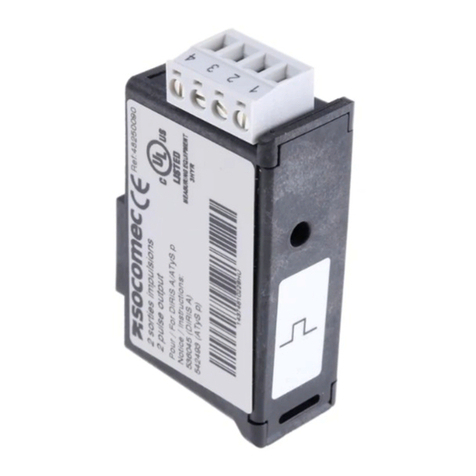
socomec
socomec DIRIS A40 operating instructions

Martindale Electric
Martindale Electric VT12 MK2 instruction manual
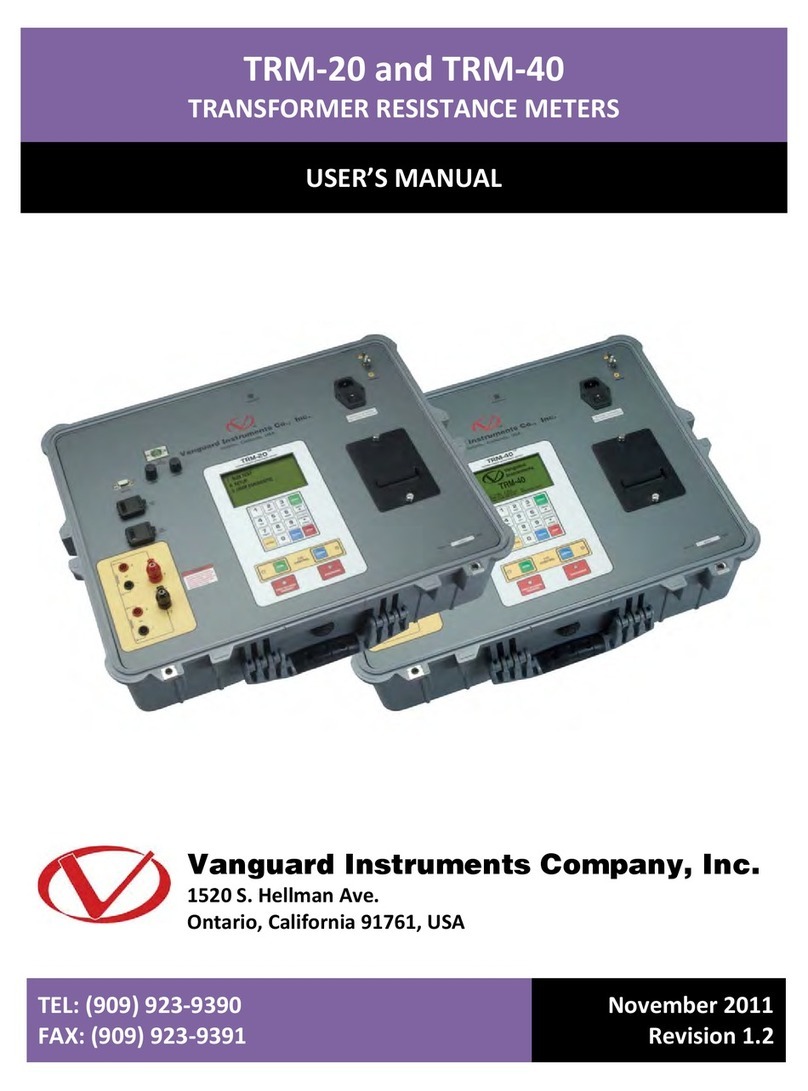
Vanguard Instruments
Vanguard Instruments TRM-40 user manual

HITROL
HITROL HRG Series instruction manual
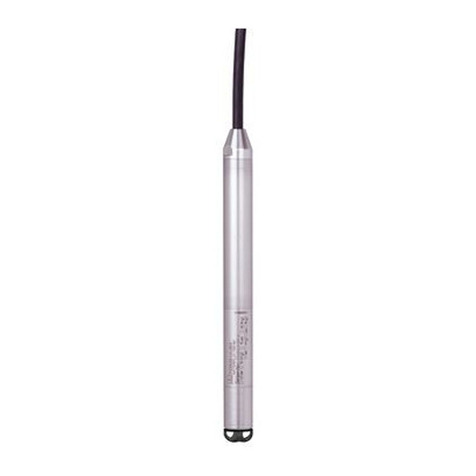
Endress+Hauser
Endress+Hauser Waterpilot FMX21 operating instructions
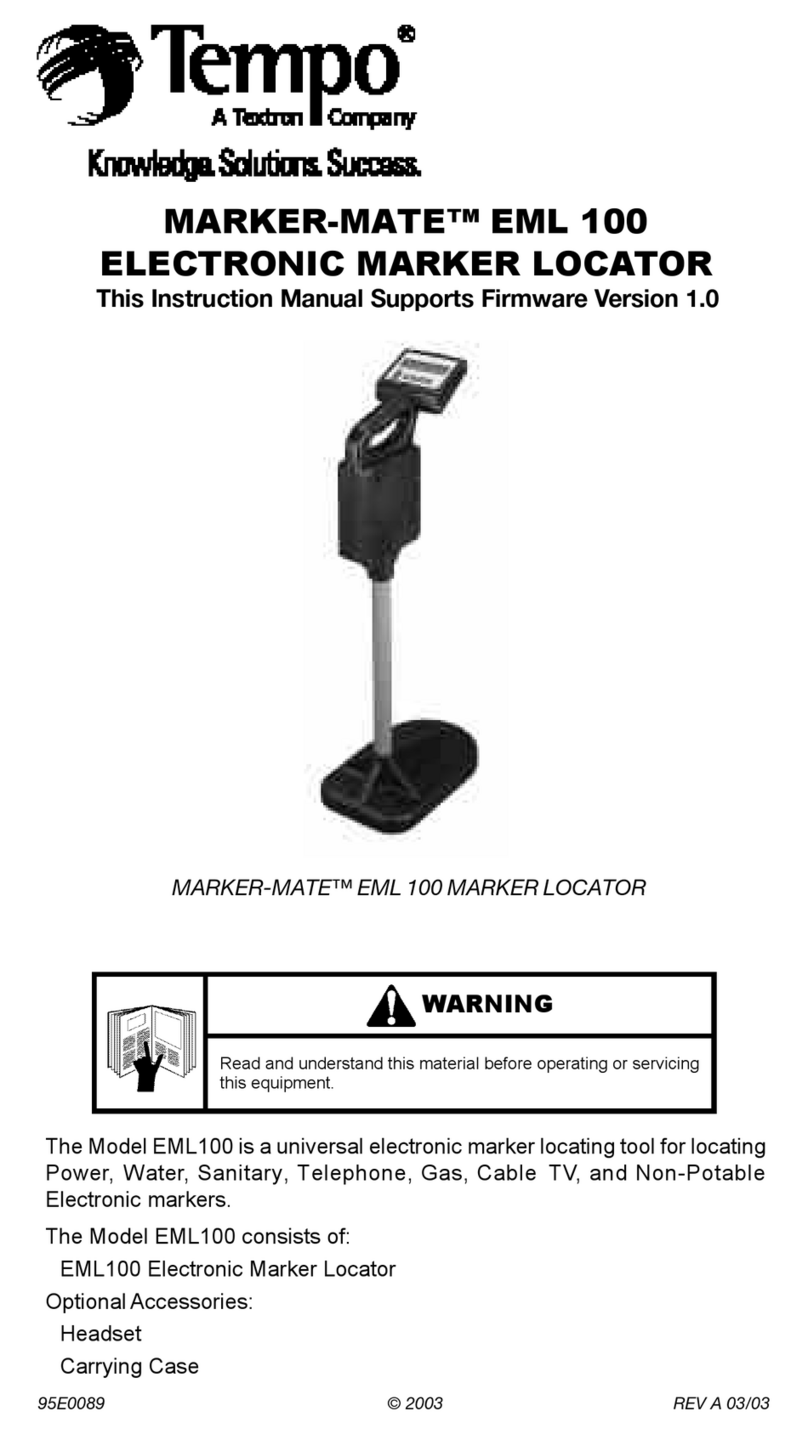
Textron
Textron Tempo Marker-Mate EML 100 instruction manual
